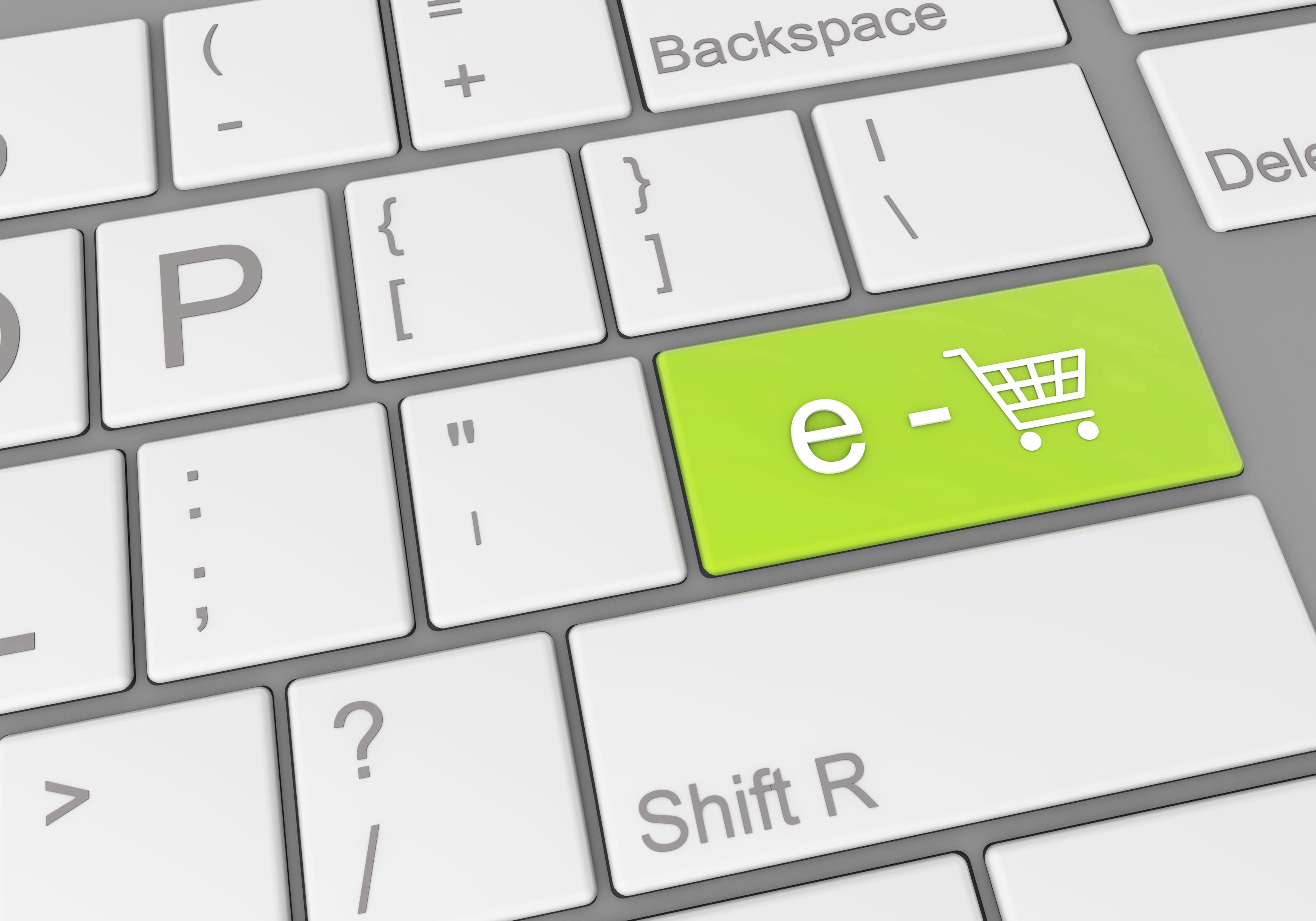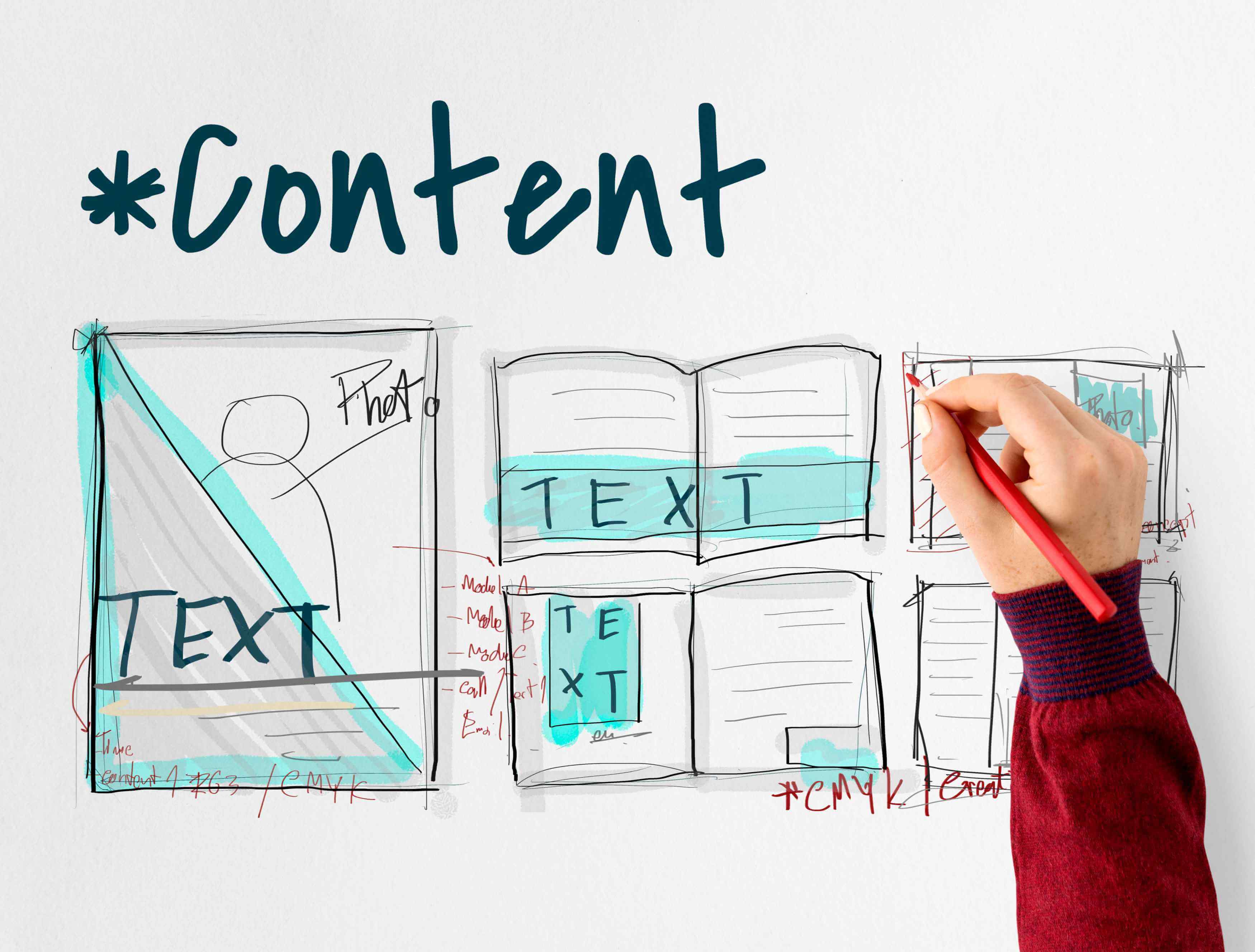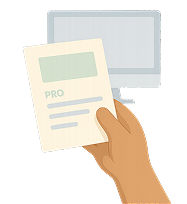What are the E-commerce Business Types?

E-commerce businesses vary greatly in form and structure, and each of the ecommerce business models is peculiarly designed to focus on the targeted consumer segmentation and the specified market demand.
-
Business to Consumer (B2C): Companies sell products directly to individual customers through online platforms. Examples include Amazon (retail) and Netflix (digital services).
-
Business to Business (B2B): Transactions occur between businesses, such as wholesale suppliers selling to retailers or software companies providing services to other businesses.
-
Consumer to Consumer (C2C): Platforms where consumers sell products or services to each other. Examples include eBay and Craigslist.
-
Consumer to Business (C2B): Consumers offer goods or services to businesses. For example, a photographer selling stock photos to a company.
-
Business to Government (B2G): Businesses sell products or services directly to government agencies.
-
Government to Business (G2B): Government provides services to businesses, including regulatory and tax-related tools.
-
Government to Consumer (G2C): Government delivers services to individuals, such as social security benefits or online tax filing.
-
Consumer to Government (C2G): Individuals interact with government entities, like paying taxes or fines online.
-
Business to Business to Consumer (B2B2C): Combines B2B and B2C models. Businesses sell products to another business, which then sells them to consumers.
Each of the following forms of e-commerce enables businesses to make targeted strategies towards specific audiences and industry needs, thus creating diverse and dynamic online marketplaces.
You can find the best ecommerce marketing agencies with Edvido. Discover the agencies, see the details of the best one for your brand, now.
What is B2C (Business to Consumer)?

Those businesses that apply the business-to-consumer ecommerce business model are the ones which sell products and services directly to customers. It only contains those transactions that take place between a business and the final customer, with no interference from any middlemen.
Business-to-consumer businesses traditionally dealing with;
-
digital services,
-
entertainment,
-
journey,
-
health,
-
education,
-
and automotive industries find their target audience through online channels.
High volumes of transactions and sensitivity to the user experience characterize business-to-consumer type relationships. Basically, the business-to-consumer model is one of direct engagement with customers.
It incorporates;
-
Internet advertisements,
-
email marketing,
-
and social media, among other means, to increase sales and brand loyalty.
The innovation does not stop at B2C businesses, especially when technology advances and they make good use of artificial intelligence, big data analytics, and mobile optimization in tailoring their offerings to suit the changing consumer behavior.
B2C Business Examples
What is B2B (Business to Business)?

Business-to-business is an ecommerce business model wherein transactions occur between businesses, opposed to transactions between businesses and individual customers. In the business-to-business model, firms provide other firms with needed goods or services like distributors, manufacturers, service providers, and consulting firms.
Unlike B2C transactions, B2B transactions are normally associated with larger volumes, longer sales cycles, and more complex purchasing procedures. Contracts and agreements are very often attuned to the needs of the business buyer in B2B contacts. The B2B model—powered by technologies like EDI, CRM systems, and automated procurement solutions—thus makes use of online platforms for supply chain management, transactions, and speeding up procurement procedures.
These are platforms that allow companies to track inventories, process large orders, and stay in contact with various suppliers and a host of customers. Much attention is given to creating long-term partnerships and providing high levels of customer service and support in B2B transactions to ensure business needs are effectively met.
See the details of E-Commerce Consulting Prices.
B2B Business Examples
-
Intel
-
Deloitte
-
HubSpot
-
Amazon Web Services
-
LinkedIn
-
Xerox
-
FedEx
-
Adobe
B2B vs. B2C
|
Aspect |
B2B (Business-to-Business) |
B2C (Business-to-Consumer) |
|
Target Audience |
Businesses, corporations, and organizations |
Individual consumers |
|
Sales Cycle |
Longer sales cycles, often involves multiple decision-makers |
Shorter sales cycles, quicker purchasing decisions |
|
Order Size |
Typically larger orders and bulk purchasing |
Smaller, individual orders |
|
Customer Relationship |
Long-term relationships and recurring business |
One-time purchases with potential for repeat business |
|
Decision Process |
Complex decision-making process, often involving several stakeholders |
Simpler decision-making process, usually made by individuals |
|
Marketing Focus |
Relationship-driven marketing, often through direct sales and networking |
Brand-driven marketing, focused on emotional appeal and consumer needs |
|
Customization |
High level of customization and tailored solutions |
Standardized products and services |
|
Pricing |
Negotiable, volume discounts, and contract-based pricing |
Fixed pricing with occasional discounts and promotions |
|
Customer Support |
Dedicated account managers and personalized support |
General customer service and self-service options |
|
Payment Terms |
Often involves credit terms, invoicing, and payment schedules |
Immediate payment through credit cards, PayPal, etc. |
|
Market Size |
Generally smaller, niche markets |
Larger, mass markets |
|
Examples |
Industrial equipment suppliers, software providers, wholesale distributors |
Retail stores, online shops, direct-to-consumer brands |
What is B2G (Business to Government)?

Business to Government is an ecommerce model under which companies sell goods, services, or solutions directly to public sector and governmental entities, playing a significant role in the ecommerce industry. Under this model, companies sign agreements with government agencies to deliver a variety of services, from infrastructure to technology, consultancy, and specialty goods. A firm building a new bridge for a city government, handling all construction and materials needed, or a company offering strategic planning and management consulting services to a state health department, are excellent examples of a B2G model.
Formal procurement procedures are often used to define business-to-government transactions, characterized by such processes as competitive bidding and tendering, with adherence to particular regulatory criteria. These procedures tend to achieve effectiveness, justice, and transparency in government expenditure. Business-to-government transactions involve a long sales cycle and intricate negotiations of a contract since a firm must comply with strict laws, such as dealing with the red tape bureaucracy.
Furthermore, companies that carry out B2G business may have to bear stringent reporting and auditing requirements that avoid misappropriation of public finances and ensure observance of the government’s regulation.
B2G Business Examples
-
IBM
-
Microsoft
-
Pearson
-
Siemens
-
PwC
-
Sodexo
-
JPMorgan Chase Bank
-
McKesson
What is C2C (Customer to Customer)?

Consumer-to-consumer (C2C) expands on one of the forms of ecommerce businesses where consumers can transact directly with other people, almost always in a third-party situation. This setup involves buying and selling by people or services provisioned for other customers with no interference from the conventional retailer or any form of intermediary.
For instance, one consumer can sell her used clothing or electronics directly to another consumer, or a home cook can sell cookies or cakes to neighbors or friends. All these are examples of transactions in a consumer-to-consumer e-commerce model. The C2C model is greatly facilitated by many dominant platforms. These platforms generally offer services like user reviews, dispute resolution, and safe payment processing to instill confidence and security in every transaction.
Through the C2C model, people can gain money from their goods or capabilities; this makes it very easy for customers to find unique or used products from other customers. Such a strategy provides small business owners with an opportunity to grow their target market by promoting community-driven commerce.
Check out the Top Must-Have Sales Tools.
C2C Business Examples
-
Airbnb
-
Etsy
-
Amazon Marketplace
-
Craigslist
-
Venmo
-
PayPal
-
Upwork
What is C2B (Consumer to Business)?

C2B is an e-commerce model wherein individual consumers offer products, services, or expertise to businesses. For example, having a large following on any social media platform in some way that promotes the products or the services of a business, social media influencers and bloggers create content. At the same time, photographers and artists sell their work to businesses for marketing materials, on websites, or in product designs. All these are examples for the consumer-to-business e-commerce model.
With the help of the C2B model, both consumers and businesses benefit through a symbiotic relationship. It is the platform where the expertise, creativity, and other capabilities of people are directly monetized. At the same time, the business gets a package of talents and innovative solutions.
This way, therefore, this model not only empowers the consumer but also the growth of business as well as its adaptability towards the dynamism of the market. With the changing digital platforms coming into the forefront globally, the role played by this C2B model in the world economy can be positioned to grow further up, significantly impacting ecommerce sales.
Discover the content What is a SWOT analysis.
C2B Business Examples
-
99designs
-
Upwork
-
Fiverr
-
Youtube
-
Instagram
What is G2B (Government to Business)?

The Government-to-Business e-commerce model involves transactions and interactions between government entities and private businesses. Here, the government is offering quite a number of services, pieces of information, and resources to businesses via digital means, often through an ecommerce website.
The G2B model primarily focuses on easing interactions between the government and businesses. Enhanced compliance, ease in tendering by businesses, and access to various pieces of information and services are all addressed through these portals. For example, through the government portals, businesses can file taxes and pay fees online and, at the same time, gain access to tax-related information.
This reduces administrative burdens on businesses. Governments also offer training programs and support services for better business operations to remain competitive in the market. Apart from that, governments offer grants, subsidies, and financial incentives, including related information and application procedures, which support business growth and innovativeness.
On the whole, the G2B e-commerce model strongly improves efficiency and transparency in the government-business interaction process, making a more friendly environment for the growth of business and compliance. It becomes easier to administer services to businesses if rendered more efficiently on digital platforms by governments.
G2B Business Examples
-
Boeing
-
IBM
-
Deloitte
-
AECOM
Many of these companies also operate an online store to facilitate easier transactions and better customer service.
What is G2C (Government to Customer)?

It is a kind of ecommerce model known as “government-to-consumer” (G2C), which considers the direct digital channels for resources, services, and information by government organizations to individual persons, representing one of the many types of ecommerce. The main emphasis of G2C interactions is on increasing public access to, efficiency with, and the general consumption of government services. For example, different governments worldwide provide online services in terms of applying for passports or driver’s licenses and procuring various permits. With the assistance of internet resources, all of these tasks may be completed while sitting at home and without the need to visit the appropriate government offices.
Apart from this, the government communicates with the citizens and shares information—public announcements or emergency alerts—through digital platforms and seeks public feedback. Thus, the G2C model fosters a closer relationship between the government and citizens by making public services more accessible and user-friendly. As such, the G2C initiatives enhance citizen satisfaction by reducing time and complexity in contacting the concerned government entities, thus leading to greater civic engagement.
G2C Business Examples
-
Municipal websites
-
Federal Student Aid
-
Voter registration systems
-
Government apps and websites
What is B2G (Business to Government)?

Business-to-government sales involve marketing and selling various goods and services to federal, state, or local government entities through multiple digital channels, representing one of the many ecommerce business models.
Companies provide government agencies with cybersecurity services;
-
software solution providers,
-
and other goods that are tech-related.
This could also refer to companies that supply medical equipment and medical supplies used by hospitals and clinics run by government organizations. This caters to vaccines, medical appliances, and other essential healthcare products. Utility companies offer water, electricity, and gas supplies to the different facilities operated by government agencies and public infrastructure. All these are good examples of the business-to-government e-commerce model.
In the wake of seeking to enhance the effectiveness and efficiency of government operations, the model of B2G is regarded as the cornerstone for utilizing knowledge and creativity from the business sector.
B2G Business Examples
-
Boeing
-
Cisco
-
McKinsey & Company
-
EU Tenders Electronic Daily
What is C2G (Customer to Government)?

C2G e-commerce refers to consumers buying online products or services from government institutions, similar to a direct to consumer model but involving government entities. The model emphasizes making government services easily accessible for citizens so that they can conduct various transactions and obtain information online. As an example, one could enroll in government portals on the Internet for social services such as unemployment benefits or health coverage. Beyond that, central records, such as birth certificates or marriage licenses, could also be requested and inspected online by citizens.
These are all great examples of the consumer-to-government e-commerce model. In other words, C2G makes it possible for a citizen to fulfill his obligations or access services offered by the government, making the working of the government efficient and accessible by providing ways for citizens to execute some basic activities and transactions directly through digital channels, saving their efforts in dealing with government agencies.
C2G Business Examples
-
Municipal Online Bill Pay
-
Council Tax Payments
-
Social Security Applications
-
Gov.uk License Renewals (UK)
Advantages & Disadvantages of Different E-commerce Models
|
E-commerce Model |
Advantages |
Disadvantages |
|
B2C (Business-to-Consumer) |
- Direct reach to consumers - Brand control - Wide market reach - High potential for repeat business |
- High competition - High marketing costs - Logistics and fulfillment challenges - Customer service demands |
|
B2B (Business-to-Business) |
- Larger order volumes - Long-term relationships - Recurring revenue - Less marketing expenditure |
- Longer sales cycles - Complex decision-making processes - Dependence on fewer customers - Pricing pressures |
|
B2G (Business-to-Government) |
- Large contracts - Stable and reliable payments - Prestige and credibility - Opportunities for growth |
- Lengthy procurement processes - High competition for contracts - Strict compliance requirements - Bureaucratic challenges |
|
C2C (Consumer-to-Consumer) |
- Low entry barriers - Community building - Niche markets - Peer recommendations |
- Trust issues - Quality control problems - Limited scalability - Payment security concerns |
|
C2B (Consumer-to-Business) |
- Access to a large pool of talent - Flexible workforce - Cost-effective solutions - Innovation and creativity |
- Difficulty in quality assurance - Variable pricing - Dependency on freelancers - Contractual issues |
|
G2B (Government-to-Business) |
- Access to valuable services - Facilitates compliance - Support for innovation - Business incentives |
- Bureaucratic hurdles - Slow response times - Regulatory changes - Dependence on government policies |
|
G2C (Government-to-Consumer) |
- Easy access to government services - Improved transparency - Streamlined processes - Enhanced citizen engagement |
- Digital divide issues - Privacy concerns - Bureaucratic inefficiencies - Limited service availability |
|
C2G (Consumer-to-Government) |
- Direct citizen feedback - Improved public services - Enhanced accountability - Civic engagement |
- Implementation challenges - Privacy concerns - Limited reach - Dependency on digital literacy |
How to Choose the Right E-commerce Model for Your Business?
Some vital steps exist in choosing the right ecommerce business strategy for your company. First, it is vital to set clear objectives for an organization. Some of the considerations one needs to ask himself include, “Should I sell directly to consumers or deal with other businesses?”. After that, you ought to examine your intended market. You need to determine if your clients are companies or private individuals. The next step is to select the type of product. If your products are more suitable for customers, then B2C will suit you better.
On the other hand, B2B is more beneficial to you if your products are more helpful to businesses. You should also consider the technological demands of your preferred e-commerce model since different e-commerce models have varying technological demands. The evaluation of your competitors is the second most important stage in differentiating your business from others in your sector. After that, you have to see that the chosen model of e-commerce has all the security measures and adheres to the prescribed regulations.
Last but not least, you would like to evaluate and consider the financial implications of each model. Choose a model that will suit your operating capacity and budget; some versions may have greater recurring expenditures.
Don't forget to check out the Google Local Guides Program.
Trends in E-commerce
-
Artificial Intelligence (AI) and Chatbots: AI algorithms analyze customer data to give back product recommendations, while chatbots provide instant customer support, all the way through guiding customers to make a purchase. This would improve customer satisfaction and sales.
-
Augmented Reality and Virtual Reality: AR helps customers view products for themselves; for instance, customers can try clothes with the help of AR technology. On the other hand, VR is an entirely closed and fully immersive experience in an absolutely synthetic built environment, where nothing emanates from the actual physical world. One of the many applications includes virtual showrooms, which offer the clients the capability to view your virtual retail online from the comfort of their homes. These technologies enable you to offer excellent customer experiences and boost their confidence in what they purchase.
You can find the Best Virtual Reality (VR) Agencies & Best Augmented Reality (AR) Agencies. Start discovering now.
-
Social Commerce: Social commerce turns social media platforms into e-commerce players. For example, via social commerce on Instagram, Facebook, or X, consumers can buy a product directly from the post or content viewed in their feeds. This trend uses the influence of social networks to drive sales and gives businesses a powerful tool to engage with their target audience.
-
Voice Assistants: Online buying habits are changing due to the rising use of voice-activated assistants such as Google Assistant, Siri, and Alexa. Simpler service engagement is made possible by enhanced voice-enabled e-commerce user experience and customisation. It becomes easier to multitask, so you can use voice control to make purchases and other duties at the same time.
-
Influencer Marketing: Influencer marketing has remained a very strong channel for e-commerce businesses. Brands should be able to leverage influencers to connect with people who are strongly bonded with their followers. Products could be shown authentically through them, accompanied by reviews, engaging traffic, and sales-driven content.
-
Ecommerce Industry Trends: The ecommerce industry is constantly evolving, and staying updated with the latest trends is crucial for success. Understanding diverse business models and consumer benefits, leveraging social media to expand reach and enhance customer engagement, and utilizing content marketing to drive traffic and establish brand authority are all essential strategies within the ecommerce space.
Maximize your e-commerce potential with expert services. Find them on Edvido.
F.A.Q About E-commerce Business Models
What is E-commerce?
In the most general terms, e-commerce means selling and buying goods and services over the Internet. In this way, the term would define an extremely broad range of Internet-based transactions—from the sale of every type of digital download to online auctions, and subscription services.
In other words, e-commerce is a facilitator of business transactions involving the exchange of value across organizational or individual boundaries in return for products and services. Some of the intrinsic elements of e-commerce include digital marketing tactics and electronic payment ways. With technology advancing further and further, e-commerce is likely to grow more, incorporating new innovations and developing an even bigger footprint across diverse sectors.
Is Amazon a B2B or B2C or C2C?
Amazon is mostly B2C; it sells directly to individual consumers. With its vast online marketplace, it delivers a wide array of goods to millions of consumers worldwide. But Amazon also contains large B2B activities through Amazon Business. This service represents an outlet for business procurement of all scales, helping companies to streamline their buying processes and management of procurement better.
Furthermore, Amazon enables consumers to transact with each other through the online platform, whereby this is achieved by allowing individual sellers, including sole proprietors and small companies, to list and sell their products to other customers. Therefore, Amazon is a multi-dimensional platform that integrates B2C, B2B, and C2C models with comprehensive services to satisfy various market segments and establish energetic and self-improving systems of buyers and sellers.
What is D2C?
D2C e-commerce is a kind of online business strategy where producers or manufacturers sell goods directly to customers. In this strategy, between the customer and the supplier, there are no middlemen or distributors. In the traditional retailer business model, the seller has very minimal control over what goods and services he sells since retailers sell out their items. In the D2C model, there is direct contact and control of the seller over the clients. By getting in touch with customers directly through online means, a company is better positioned to collect valuable data and tailor its marketing in order to have closer relations with the target audience.
What is B2B2C?
Business-to-business-to-consumer, popularly referred to as B2B2C, is just an extension of the business-to-business model that integrates e-commerce with consumers. It combines both B2B and B2C. B2B2C involves business partnerships whereby two businesses come together to serve clients. For example, a restaurant can partner with a digital platform to shop for and deliver food to people online. This is the B2B component of the model.
Through this digital platform, the restaurant is able to deliver food to its customers. This is the B2C part of the model. It has clearly been noticed that the B2B2C model very efficiently closes the gap between companies and consumers by using alliances to improvise product availability and optimizing customer experience.
What is B2E?
Business-to-Employee focuses attention on the workers. It is a strategy that aims to deliver various benefit packages and services tailored to help employees and raise the level of job satisfaction and employee productivity. The satisfaction level of the employees in a company is at par with the satisfaction level of customers.
Therefore, employee satisfaction is very essential for businesses. Satisfied employees are highly motivated and prepared to work efficiently. For example, companies may offer gym memberships and mental health facilities to motivate employees to live healthy lives. Some companies also offer their employees the opportunity for remote work and have flexible working hours. The agreements are intended to improve the employees' satisfaction and support them in work-life balance.
















